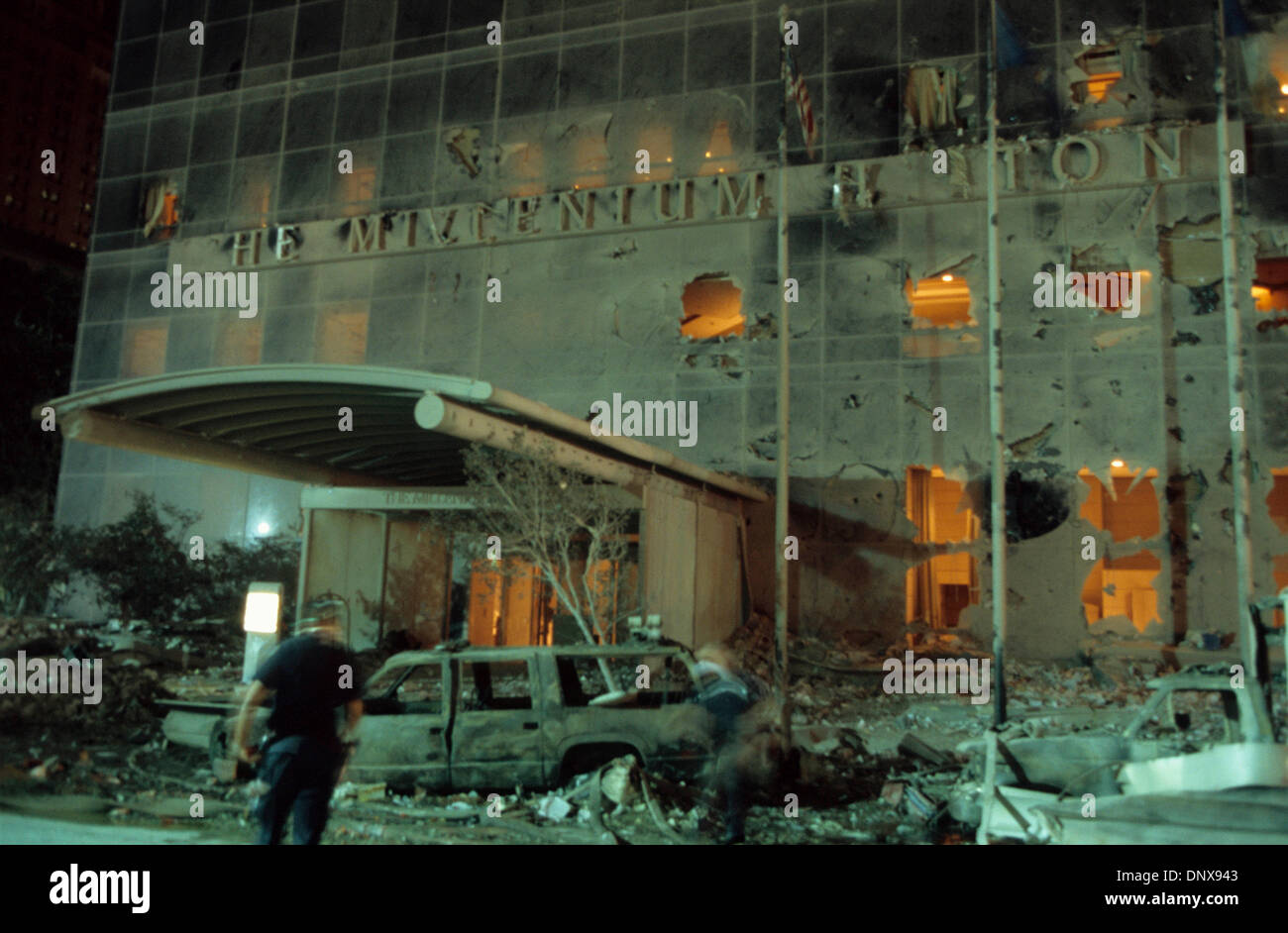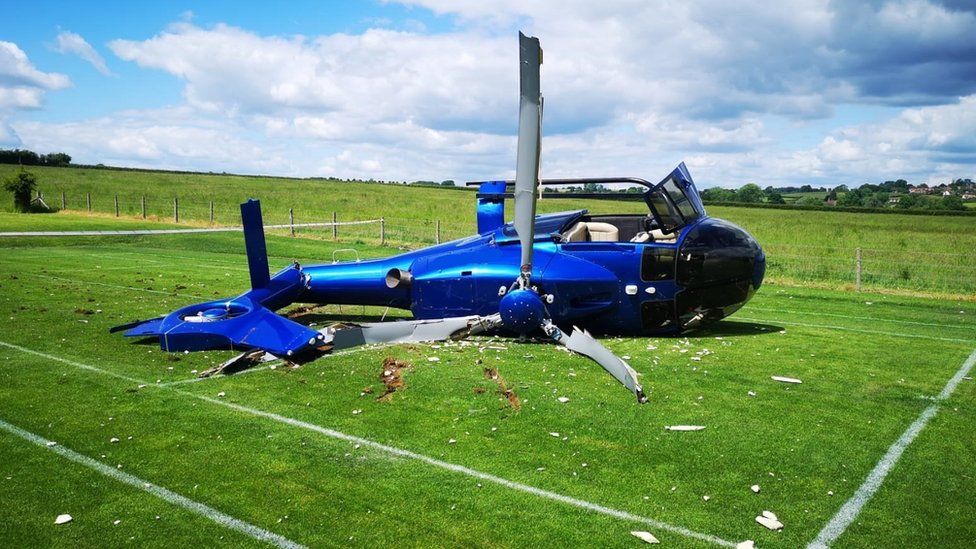The Incident

On January 26, 2023, a tragic helicopter crash occurred in New York City, impacting the iconic Hilton Midtown hotel. The incident, which garnered widespread attention, involved a Sikorsky S-76B helicopter, a type commonly used for corporate transportation and air ambulance services.
Details of the Crash
The helicopter, operated by Liberty Helicopters, departed from a heliport near the East River and was en route to a destination in Westchester County, New York. At approximately 1:45 p.m. EST, the aircraft struck the side of the Hilton Midtown hotel, which is situated at 1335 Avenue of the Americas, in the heart of Manhattan. The crash occurred on the 23rd floor, causing significant damage to the building’s exterior and sparking a fire.
The Hilton Midtown Hotel
The Hilton Midtown, formerly known as the New York Hilton, is a prominent landmark in New York City. It is a 54-story hotel with over 1,800 rooms, making it one of the largest hotels in the city. The crash site was located on the building’s west side, facing the bustling streets of Midtown Manhattan. The hotel was fully occupied at the time of the crash, with guests and staff present in various areas of the building.
Aftermath of the Crash
The crash resulted in a chaotic scene, with emergency responders rushing to the scene. The immediate aftermath saw a massive fire engulfing the impacted section of the hotel, sending plumes of smoke billowing into the sky. Firefighters battled the blaze for several hours, working tirelessly to extinguish the flames and ensure the safety of the building’s occupants.
Casualties and Injuries
The helicopter crash resulted in the tragic loss of five lives. The pilot, the four passengers, and one person inside the hotel were killed in the incident. Numerous other individuals sustained injuries, both inside and outside the hotel, requiring immediate medical attention.
Damage to the Hotel
The crash caused significant structural damage to the Hilton Midtown, with the impacted section of the building sustaining substantial damage. The fire, which spread quickly throughout the affected area, caused extensive damage to the hotel’s exterior and interior. The crash also resulted in the disruption of hotel operations, forcing the evacuation of the building and the closure of the hotel for an extended period.
Investigation and Response: Helicopter Crashes Into Hilton Hotel

The crash of the helicopter into the Hilton Hotel sent shockwaves through the city, prompting a swift and coordinated response from emergency services and authorities. The scene was immediately cordoned off, and a multi-agency investigation was launched to determine the cause of the tragic accident.
Initial Response and Perimeter Establishment
The immediate response to the crash was characterized by a surge of emergency personnel, including firefighters, paramedics, and law enforcement officers. The scene was secured, and a perimeter was established to prevent unauthorized access and ensure the safety of first responders and the public. The focus was on rescuing any survivors and providing medical assistance to the injured.
Investigation into the Cause of the Crash
The National Transportation Safety Board (NTSB) assumed primary responsibility for investigating the cause of the crash. This involved a thorough examination of the helicopter wreckage, the flight data recorder (FDR), and the cockpit voice recorder (CVR). Investigators also interviewed witnesses, reviewed maintenance records, and examined weather conditions at the time of the accident. The investigation aimed to identify any contributing factors, including pilot error, mechanical failure, or external influences.
Actions Taken by the Hotel and Other Organizations
The Hilton Hotel immediately implemented crisis management protocols, providing support to guests and staff affected by the crash. This included offering counseling services, temporary accommodations, and assistance with travel arrangements. Other organizations, such as the Red Cross and local charities, also mobilized to provide support to the victims and their families.
Safety Measures Implemented
In the wake of the crash, the hotel and other relevant organizations reviewed safety procedures and implemented additional measures to enhance security. This may have included reviewing building codes, upgrading security systems, and conducting safety drills to improve preparedness for future emergencies.
Impact and Aftermath

The helicopter crash into the Hilton hotel was a tragic event with far-reaching consequences, affecting not only the immediate victims but also the hotel, its guests, and the surrounding community. The impact of the crash reverberated through various aspects of life, leaving a lasting mark on those involved.
Impact on the Hotel and Guests
The immediate impact of the crash was devastating. The hotel suffered significant structural damage, rendering it uninhabitable. Guests were evacuated, many of whom were left stranded and traumatized. Some guests sustained injuries, while others lost belongings. The crash also disrupted the hotel’s operations, leading to cancellations and financial losses. The incident left a lasting impact on the hotel’s reputation, potentially affecting future bookings.
Psychological and Emotional Impact
The psychological and emotional impact of the crash was profound. Survivors, first responders, and witnesses experienced a range of emotions, including shock, fear, grief, and guilt. Many suffered from post-traumatic stress disorder (PTSD) and other mental health issues. The trauma of the event could have long-term consequences, affecting their relationships, work, and overall well-being.
Economic and Reputational Implications, Helicopter crashes into hilton hotel
The crash had significant economic and reputational implications for the hotel and the wider tourism industry. The hotel faced substantial repair costs and lost revenue due to the closure. The incident also damaged the hotel’s reputation, potentially discouraging future guests from choosing the hotel. The wider tourism industry could experience a decline in visitor numbers, as tourists might be hesitant to travel to the area due to safety concerns.
